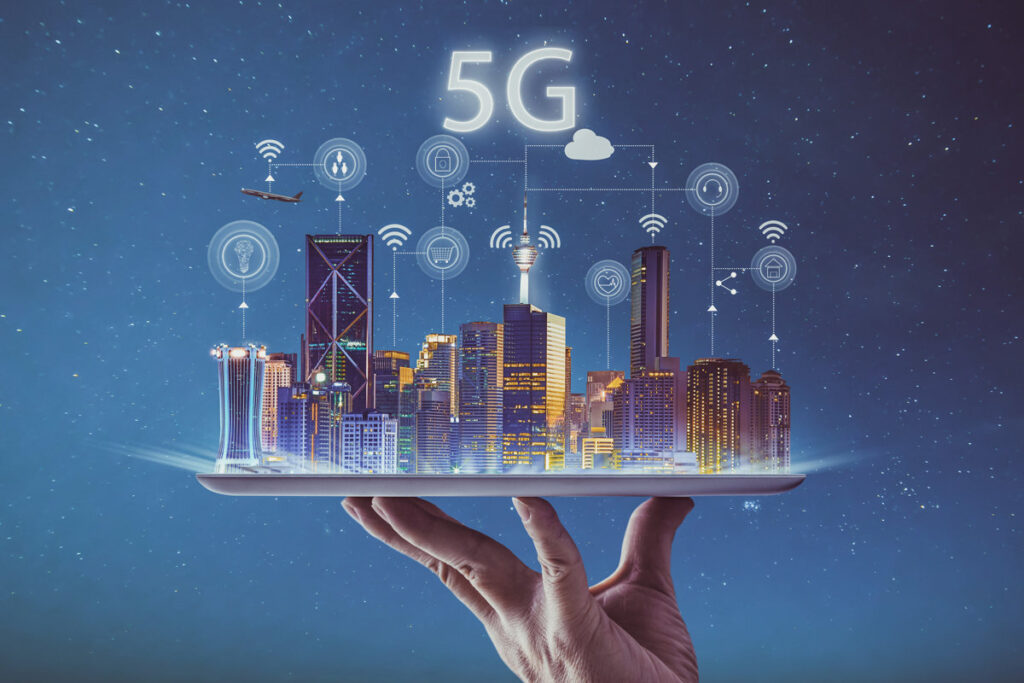5G is the fifth generation of cellular network technology. It is the successor to 4G LTE, and one can expect that it will provide significantly faster speeds, lower latency, and greater capacity than current networks. 5G is still under development, but it is expected to be rolled out in many parts of the world in the next few years.
Advantages of 5G
- Faster speeds: 5G is expected to provide speeds of up to 10 gigabits per second (Gbps), which is 100 times faster than current 4G LTE networks.
- Lower latency: 5G also has lower latency, which is the time it takes for data to travel from one point to another. This will make 5G ideal for applications such as real-time gaming and video streaming.
- Greater capacity: 5G networks will be able to support more devices and users than current networks. This will be important as more and more devices become connected to the internet.
Potential applications of 5G
- Mobile broadband: 5G will provide faster and more reliable mobile broadband internet access. This will allow users to stream high-definition video, download large files, and play online games without interruption.
- Fixed wireless access: 5G can also be useful to provide fixed wireless access (FWA) to the internet. This will be a good option for people in areas where cable or fiber internet is not available.
- Internet of Things (IoT): 5G will be essential for the development of the Internet of Things (IoT). The IoT is a network of physical objects that are connected to the internet and can collect and exchange data. 5G will provide the speed, latency, and capacity needed to support the IoT.
- Autonomous vehicles: 5G will also play a role in the development of autonomous vehicles. Autonomous vehicles need to be able to communicate with each other and with infrastructure in real-time in order to operate safely. 5G will provide the low latency and high capacity needed for this communication.
Countries Using 5G Technologies
United States, China, South Korea, and other states are using 5G broadband. This high-speed and advanced technology is compatible with Apple, Pixel 7a, Samsung Galaxy A54, Motorola, Samsung Galaxy S23, iPhone 14, etc.

Challenges of 5G
- Deployment costs: 5G Installation cost is high. This is due to the need to build new infrastructure and upgrade existing infrastructure.
- Spectrum availability: 5G networks require a lot of spectrums. This is a spectrum that is currently useful for other purposes, such as television broadcasting. It will be necessary to free up this spectrum for 5G in order to achieve the full potential of the technology.
- Security concerns: 5G networks are more complex than previous generations of cellular networks. This can make them less safe from security threats. It is important to develop and deploy security measures to protect 5G networks.
Conclusion
5G technology is about to bring in a new age of connection, changing how we live, work, and talk to each other. It can be used in many different areas, making our lives easier, more comfortable, and more linked. It is still under development, but one can expect that many parts of the world will use 5G in the next few years. 5G will provide faster speeds, lower latency, and greater capacity than current networks. This will make it ideal for a wide range of applications, including mobile broadband, fixed wireless access, the Internet of Things, and autonomous vehicles.
FAQs
5G is the fifth generation of cellular network technology. It is the successor to 4G LTE, and it is expected to provide significantly faster speeds, lower latency, and greater capacity than current networks. It is still under development, but one can expect that many parts of the world will use 5G in the next few years.
5G offers a number of benefits over current 4G LTE networks, including:
Faster speeds: 5G will provide speeds of up to 10 gigabits per second (Gbps), which is 100 times faster than current 4G LTE networks. This will allow users to stream high-definition video, download large files, and play online games without interruption.
Lower latency: 5G also has lower latency, which is the time it takes for data to travel from one point to another. This will make 5G ideal for applications such as real-time gaming and video streaming.
Greater capacity: 5G networks will be able to support more devices and users than current networks.
5G is significantly faster than 4G, with lower latency (less delay). It can support more devices at once and is better suited for applications like IoT and augmented reality.
It is still under development, but one can expect that many parts of the world will use 5G in the next few years. Some countries, such as South Korea and the United States, have already launched 5G networks in limited areas.
5G technology uses higher-frequency radio waves, which has raised some concerns, but extensive research and safety regulations are in place to address these concerns. The consensus among experts is that 5G is safe.